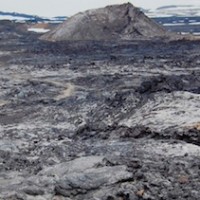Produce Food with Care for Soil Fertility and Fresh Water

Volkert Engelsman, CEO Eosta, Nature & More, World Board IFOAM, Earth Charter Endorser

Kunstfoto’s van José Veugen en Yvonne Halvens
The most common sources of soil and water pollution are the use of mineral fertilizers, agro chemicals and waste disposal from industrialized animal / bio industry. Organic agriculture considers medium- and long-term effects of agricultural interventions on the agro-ecosystem. It aims to produce food while establishing an ecological balance to prevent damage to soil fertility and its water holding capacity. Soil building practices such as crop rotations, inter-cropping, symbiotic associations, cover crops, organic fertilizers and minimum tillage are central to organic practices. These encourage soil fauna and flora, improving soil formation and structure and creating more stable soil systems. In turn, nutrient and energy cycling is increased and the retentive abilities of the soil for nutrients and water are enhanced, compensating for the non-use of mineral fertilizers.
Such management techniques also play an important role in soil erosion control. The length of time that the soil is exposed to erosive forces is decreased, soil biodiversity is increased, and nutrient losses are reduced, helping to maintain and enhance soil productivity and its water holding capacities. In many agriculture areas, pollution of groundwater courses with synthetic fertilizers and pesticides is a major problem. As the use of these is prohibited in organic agriculture, they are replaced by organic fertilizers (e.g. compost, animal manure, green manure) and through the use of greater biodiversity (in terms of species cultivated and permanent vegetation), enhancing soil structure and water infiltration. Well managed organic systems with better nutrient retentive abilities, greatly reduce the risk of groundwater pollution. (Source: FAO, 2014)
